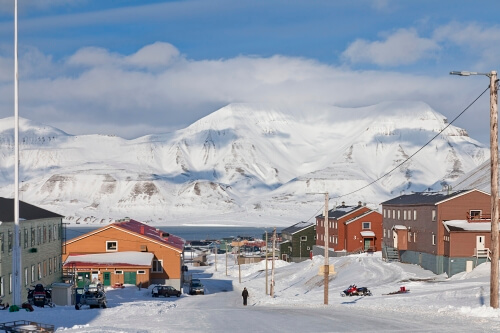My Svalbard holiday
‘Have you just been to the North Pole?’ I was asked on my return from my Svalbard holiday. It wasn’t too far from the truth.
High in the Arctic Circle, Svalbard is famous for polar bears and the Svalbard Global Seed Vault. Part of Norway, Svalbard is one of the most northerly inhabited places in the world, high up in the Arctic Circle and around 800 miles from the North Pole itself.
A trip there will certainly make you feel on top of the world. In just a few days in this unique location, I had driven a team of huskies across the snowy landscape, shot across the Arctic tundra at high speed on a snowmobile, explored ghost towns, trekked deep inside a 5,000-year-old glacier, stayed in remote hunting lodges and kept a keen eye out for polar bears.
And did I mention the Northern Lights? This is certainly a destination like no other.
Exploring with Hurtigruten
I travelled with Hurtigruten, the Norwegian cruise line famed for its routes up and down the Norwegian coast. It’s been sailing for 130 years so it knows what it’s doing, but the exciting thing about Hurtigruten is its epic adventure cruises. As well as its Original Voyages – the Norwegian coastal routes – its Signature Voyages offer something really special: the chance to explore Svalbard in the Arctic.
Other Hurtigruten holidays reviewed
Sailing the Norwegian coast
Visting Svalbard in summer
During the summer months, Hurtigruten sails to and from Svalbard on its newly-restored Svalbard Line, but during the winter, when the seas are frozen, adventurous travellers seeking something rather different from their holidays can travel to Svalbard with Hurtigruten Expedition Cruises and challenge themselves with everything from dog-sledding and snowmobile safaris to watching the Northern Lights and going inside a 5,000 year old glacier.
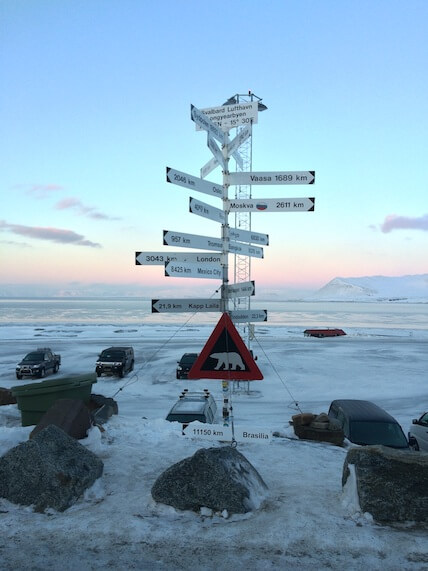
The view which greets arrivals to Longyearbyen airport – mountains, polar bears and a sign telling you how far away you are from anything
Where is Svalbard?
The Svalbard archipelago is a vast, snowy wilderness north of Norway. A succession of planes took me from London to Oslo, then up the Norwegian coast to Tromsø. After that, I flew north over the Arctic Ocean for almost 1,000 km to Longyearbyen, the largest town on the island of Spitsbergen, which literally means ‘pointy mountains.’
Those sitting on the right-hand side of the plane in particular will get a spectacular view of those mountains, but if you’re in an aisle seat, don’t worry – the moment you step outside the airport you are greeted by a view of a ring of snow-covered mountains far away across the Adventfjorden (don’t forget to say hello to the stuffed polar bear at the baggage hall).
Svalbard weather
Temperatures in Svalbard vary, but in February, when I was visiting, they can reach minus 20C and the fjords freeze over. While I found layers of clothes, a hat, warm coat and gloves essential, the lack of wind prevented it from feeling as blisteringly cold as I’d expected.
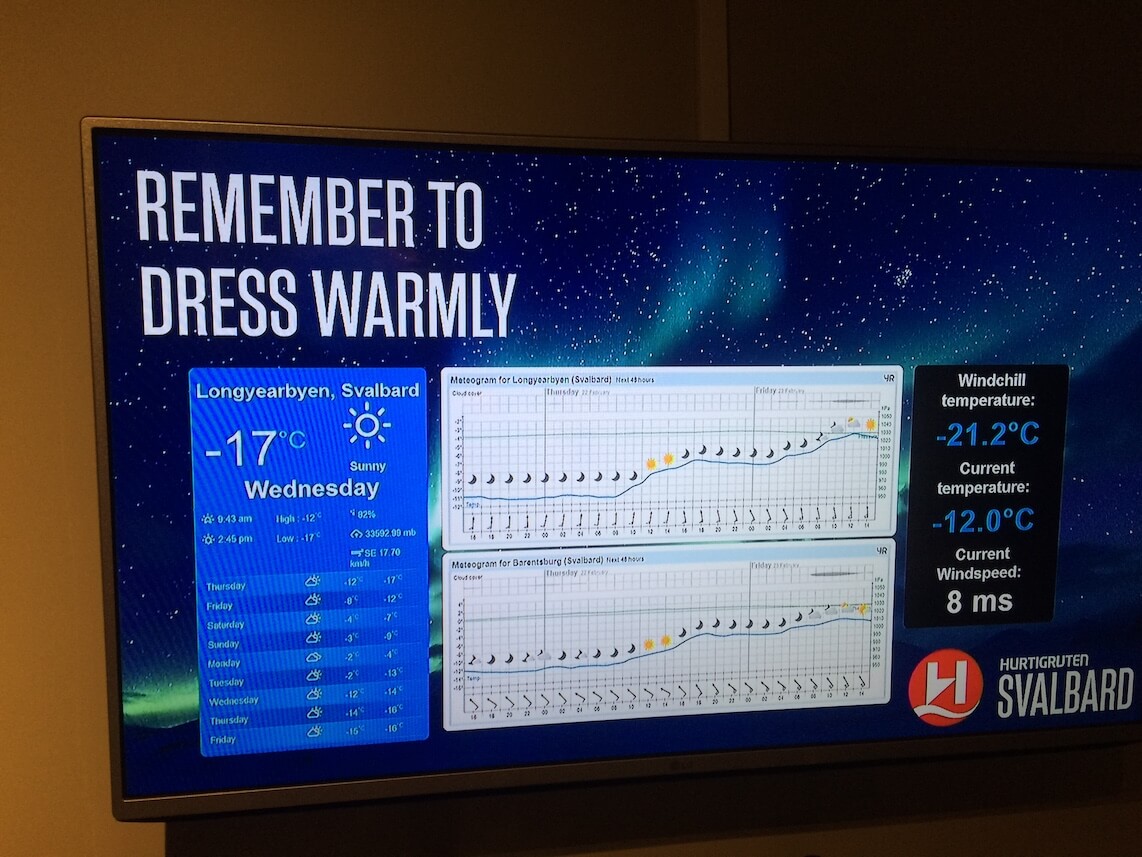
One of the TV channels in Svalbard is dedicated to the weather, while another has a countdown to when the sun will finally appear
In the winter months, due to its northerly location and the surrounding mountains, the sun isn’t seen at all except on the tops of mountains and glaciers. In mid-March there is a big party to celebrate the first appearance of sunshine on the church steps, while the summer has 24-hour sunshine – bright, blazing sunshine even at midnight, so eyemasks are a must.
However, even in the winter months the snow that blankets the territory gives off reflected light and makes the place feel like Narnia.
Life in Longyearbyen
Longyearbyen (pronounced Long-yer-been), Svalbard’s main town and the world’s most northerly settlement, has around 2,100 inhabitants and there’s a great community spirit thanks, no doubt, to the remote location and the challenges of living in the Arctic tundra. Polar bears are a constant threat.
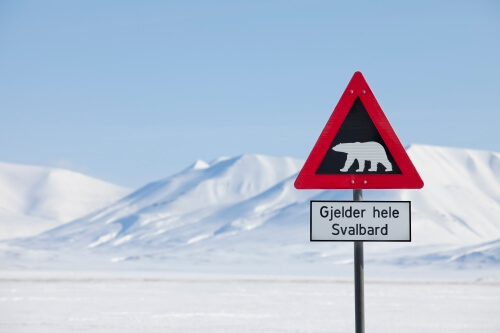
‘Everywhere in Svalbard’ warns the sign just outside Longyearbyen
While they mainly stay on other side of Svalbard, some venture into town and so practically everyone carries a gun (my taxi driver had one in his car). Homes and vehicles are left unlocked with keys inside in case a bear arrives unexpectedly and you need to escape or hide.
While there is a good range of shops, bars, restaurants and hotels, the main reason to go to Svalbard is to search for adventure of an epic scale and my visit did not disappoint.
Dog-sledding in Svalbard
Within an hour of landing in Svalbard, I was at Green Dog huskies being deafened by the sound of 60 over-excited dogs, barking, whining and growling at the prospect of a run. Impressively, once they were tied to the sledges and we started moving, they were completely silent and focused on the task at hand, and the only sound was of the jingle of their harnesses as they sprinted off into the night.
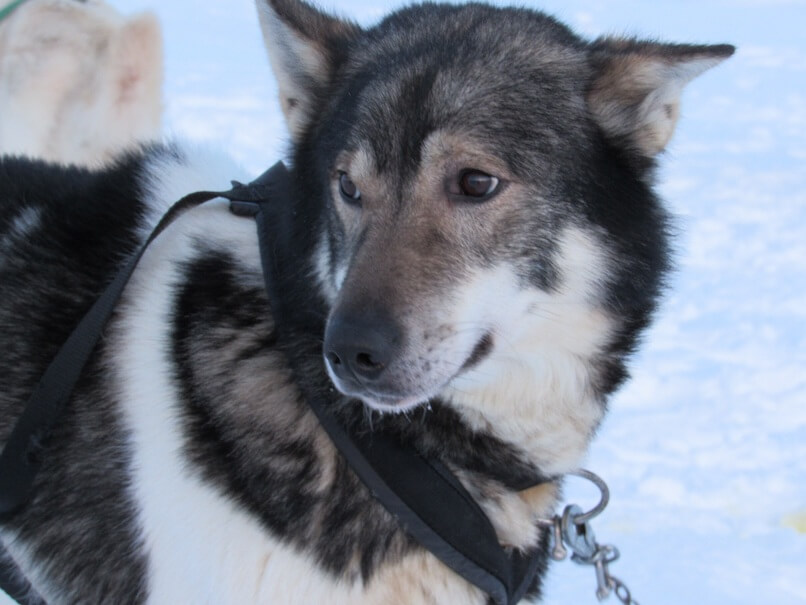
The huskies at Green Dog were anxious to be off into the snow
There were two of us to each sledge – one sitting, one standing on the back ready to jump on the brakes if needed – and our six dogs took us off at a breakneck speed for an three-hour ride across the snowy landscape towards our beds for the night in a remote hunting lodge, Juva Cabin.
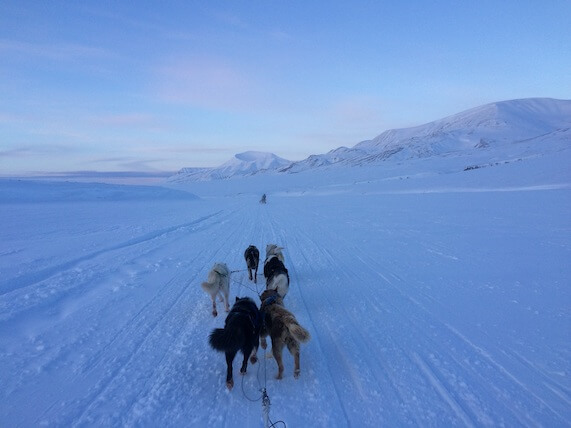
Being pulled along by a team of huskies into the snowy heart of Svalbard was a magical experience
We arrived in the pitch-black darkness with not a light to be seen – perfect for night-time star-gazing.
The cabin itself lacks nothing, being equipped with comfortable beds, a warm fireplace, lounge room, kitchen, indoor toilet and even a separate sauna with a vast window meaning you can gaze out at the stars and snow while feeling thoroughly toasty.
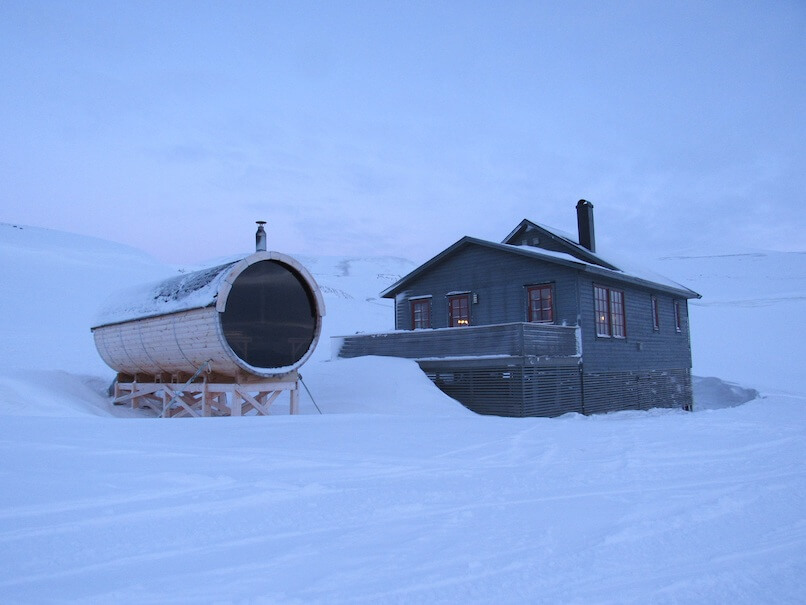
The remote Juva Cabin expedition lodge and sauna is perfect for getting away from it all – and gazing at the night sky free from light pollution
It is wonderfully remote. When I woke the next morning I could see nothing but snow for miles around and the hint of the sun peeping over a ice-capped ridge in the distance.
It was time to get the huskies into harness again – which meant wrestling with the huge, hairy dogs in the snow, a surprisingly fun and crazy experience – and then once more let them whisk us away over the snow, a magical experience in the early-morning light.
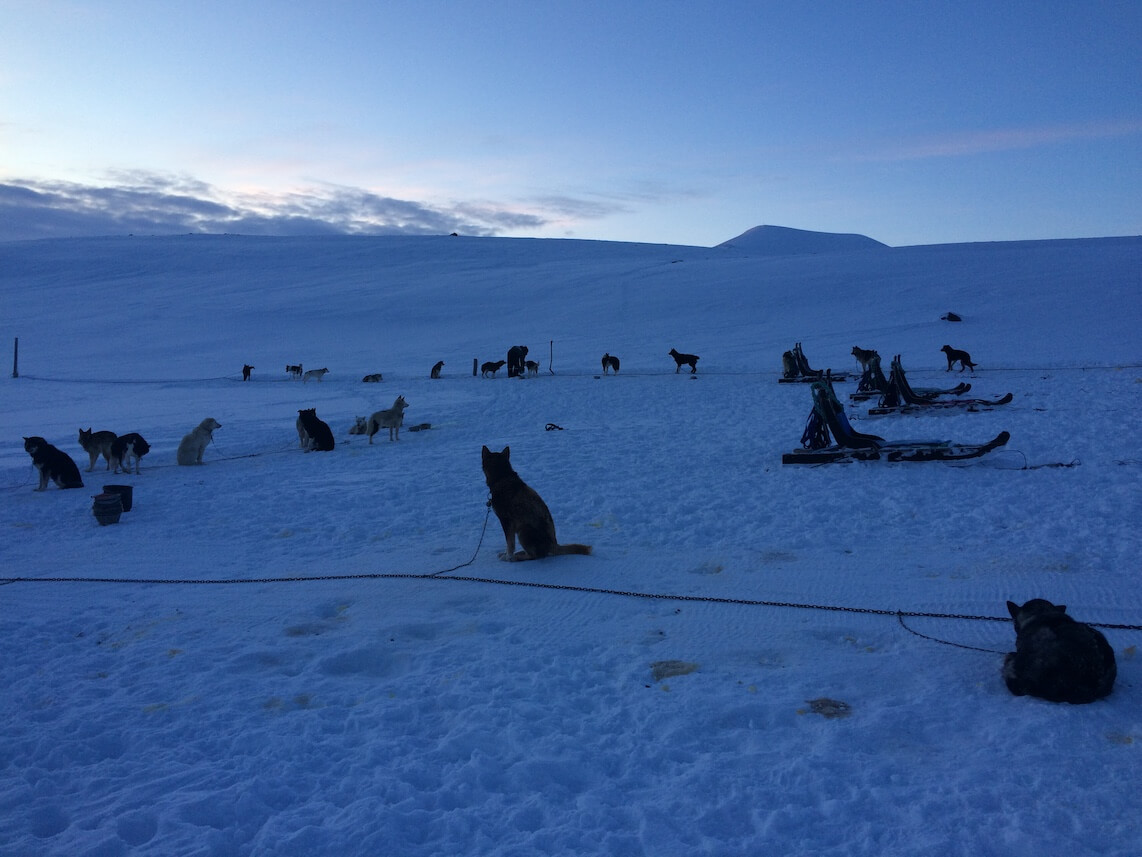
We woke to find the huskies waiting for us in the early morning light
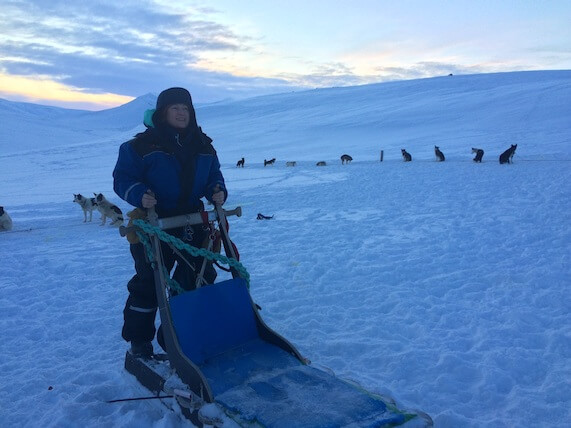
Me posing for pics in the early morning light before we actually got going…
Svalbard snowmobile safari
If you’d rather travel under your own steam and explore further afield, then a snowmobile safari is for you.
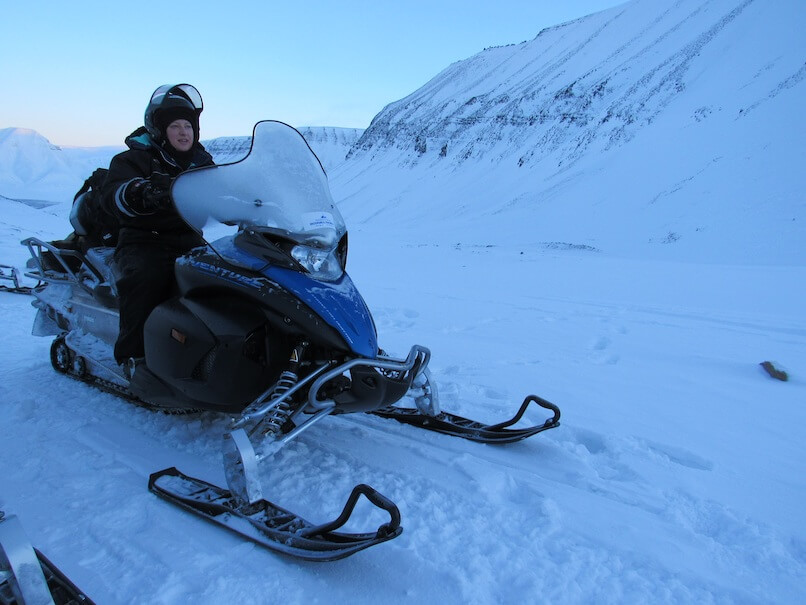
Setting off on a snowmobile safari across Svalbard was another exciting trip into the unknown
With petrol engines, these vehicles are certainly louder than the huskies, but with a speed of around 50km per hour they make short work of the hills and glaciers. Multiple layers of clothes are definitely recommended. As well as thick rubber boots, gloves and balaclavas, you’ll be kitted out in an all-in-one thermal suit, which will keep you toasty in the coldest weather.
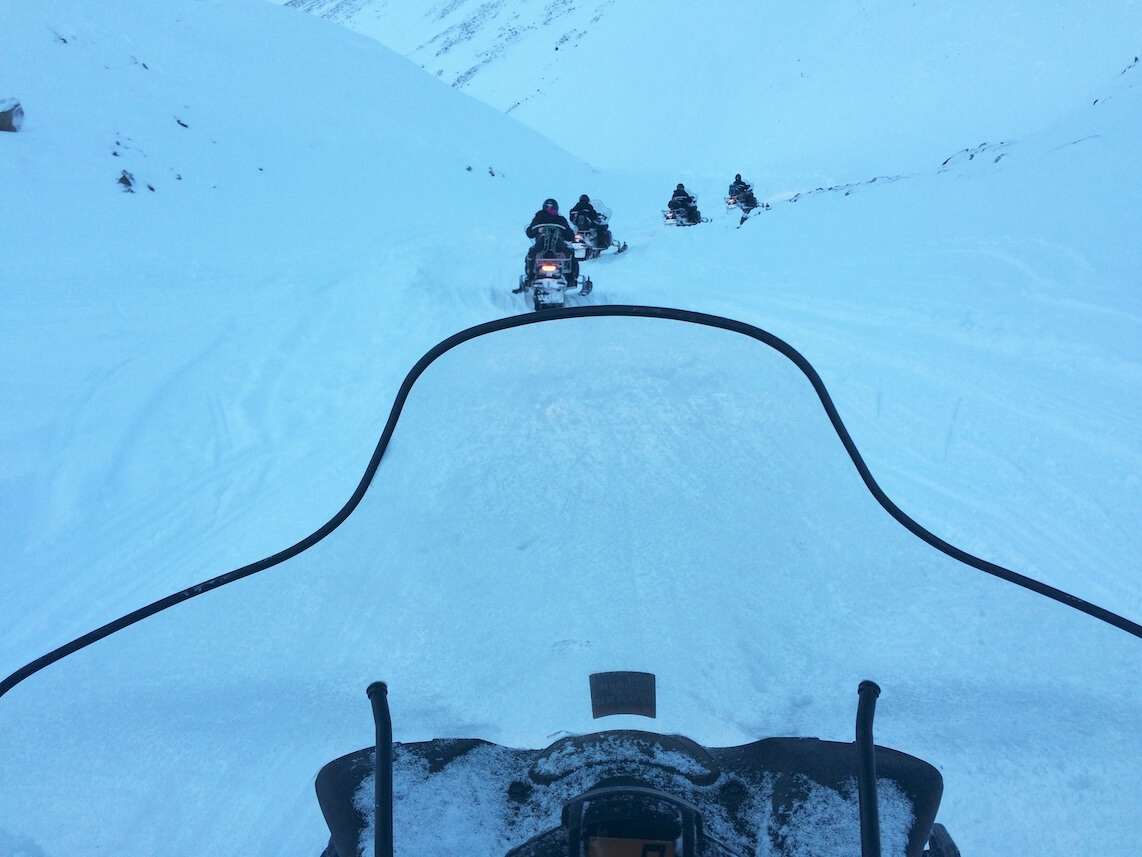
We headed off on our snowmobiles over the snow into the heart of Svalbard
After a quick lesson from our guides, and a few minutes of rather uncertain driving through town, we soon got the hang of snowmobiling and shot up the nearest glacier, ahead of a seven-hour drive across Spitsbergen.
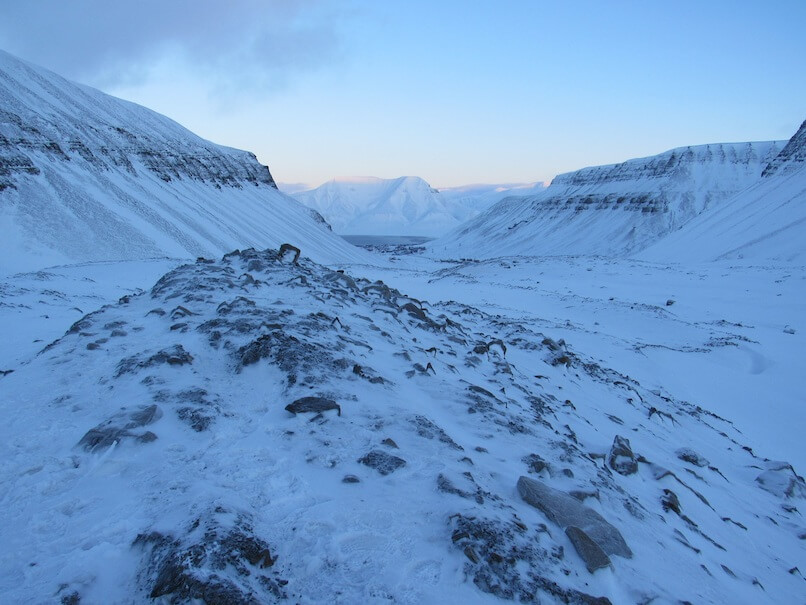
Svalbard in the winter months is stunning, with thick snow and ice and the permanently eerie half light
The journey was like something out of a dream: sometimes you’d be crossing a vast, icy flood plain with stunning views for miles around; other times we were in total whiteout making it impossible to tell sky from snow. Only the ice-covered speedometer and occasionally overtaking a stocky Svalbard reindeer, which roam wild on the mountains, told me we were moving.
Deserted mining towns on Svalbard
We stopped for lunch at the eerie Coles Bay – a former mining town once home to 1,000 workers, which now just contains five derelict buildings and a crumbling pier, perfect for some atmospheric photos.
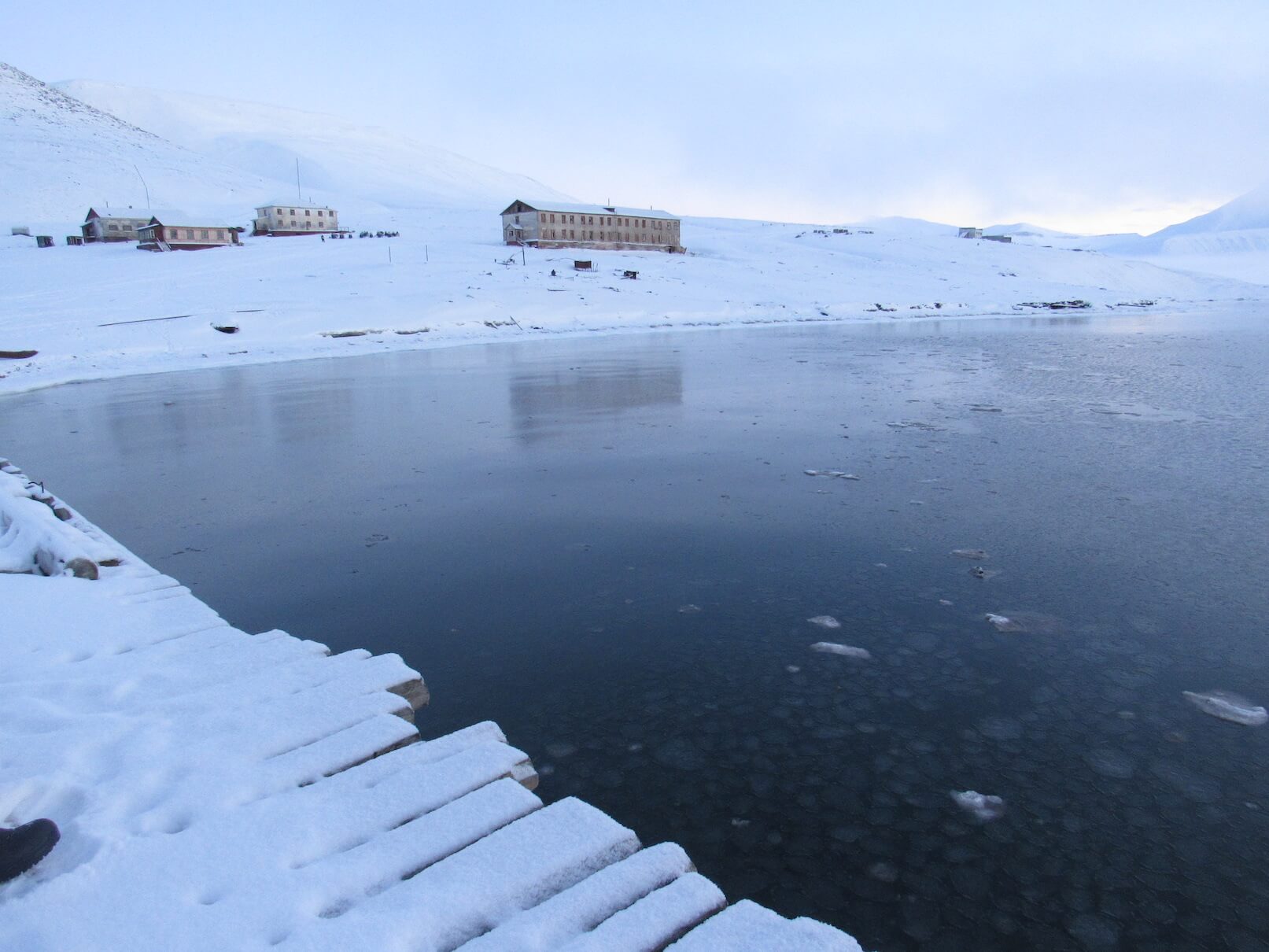
The deserted former mining town of Coles Bay
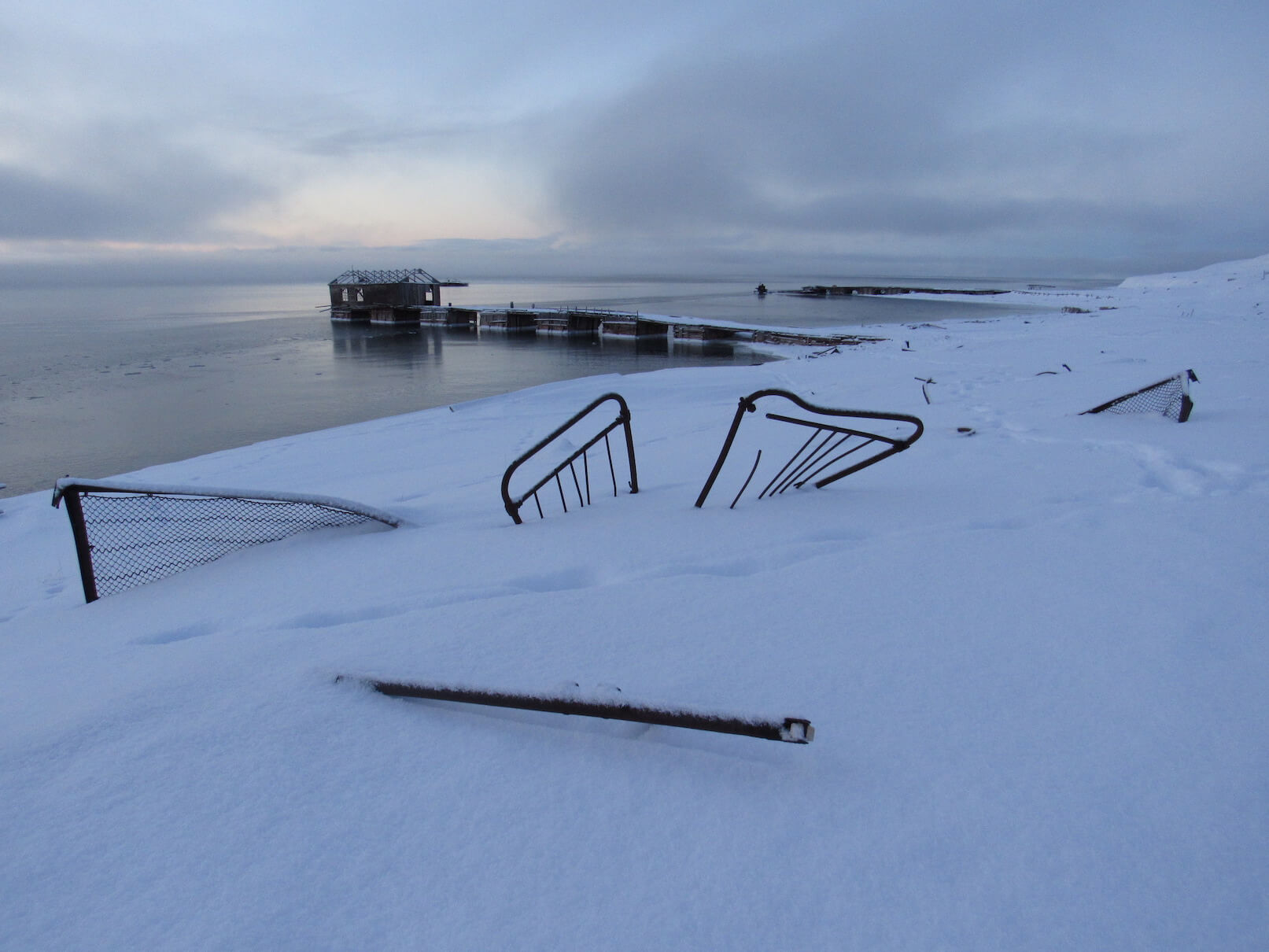
We stopped here for lunch on our snowmobile safari – quite an unusual picnic spot!
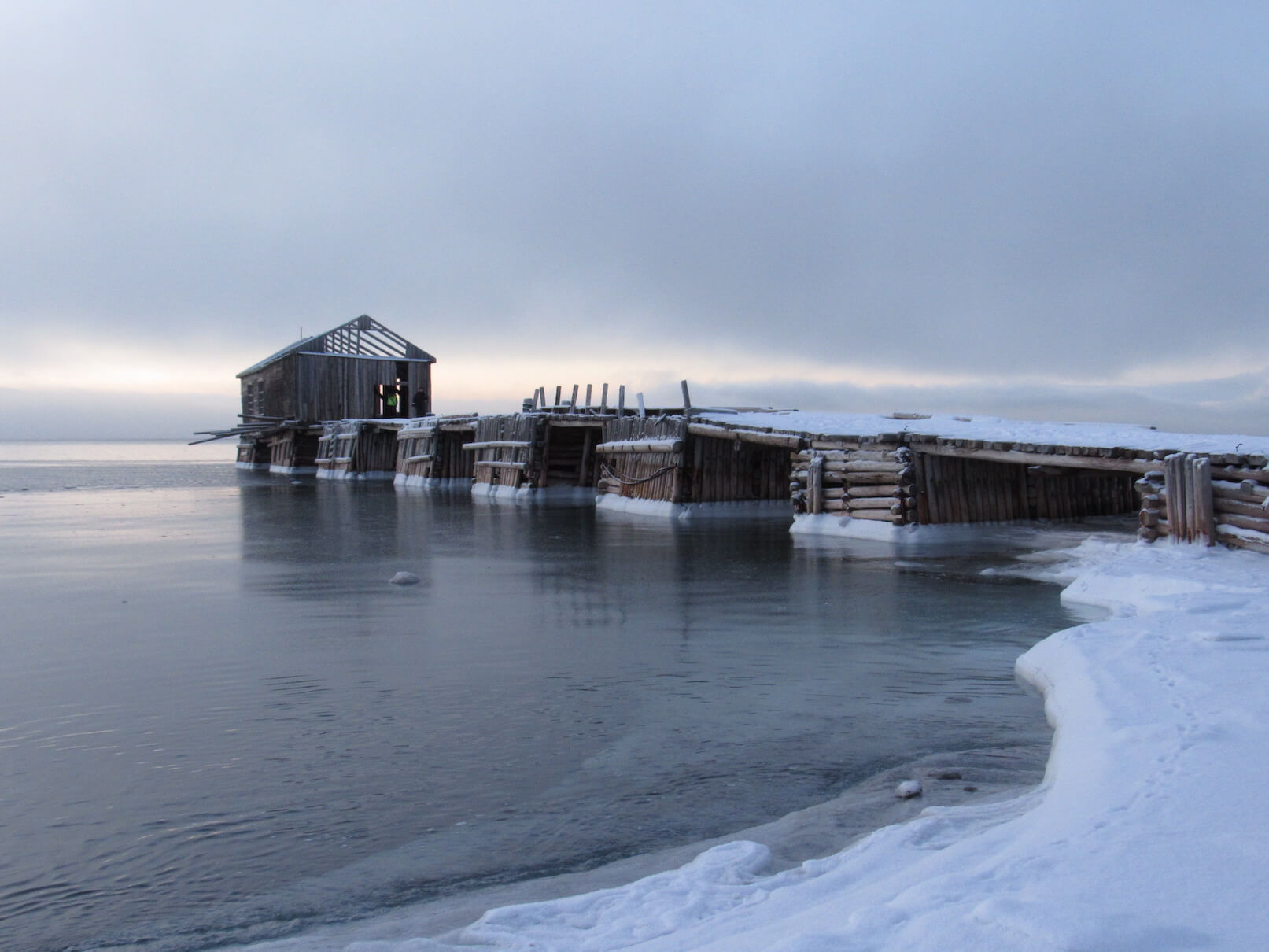
There’s even a ruined pier which we cautiously explored
Then we ploughed on into the interior of the island as night-time descended.
We were certainly glad of our thermal suits as the wind whipped up the snow – Star Wars fans would have believed themselves to be on the ice planet of Hoth, so dramatic was the roaring gusts and ice and snow everywhere. Phones, camera batteries and fingers quickly froze in the sub-20 temperatures.
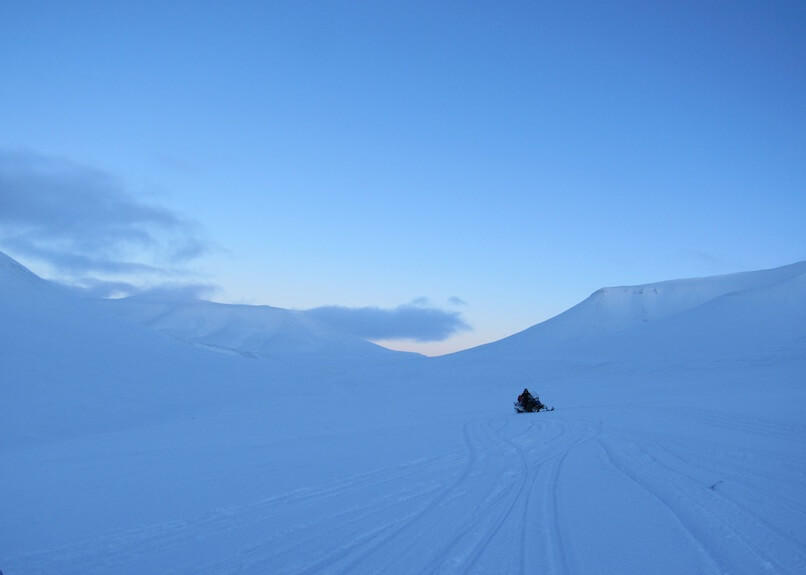
It was truly an intrepid adventure crossing Spitsbergen by snowmobile
It was with relief that we descended our final glacier in the pitch-dark to reach the town of Svea. This former mining town was almost deserted except for a hostel, which was still serving hot food and cold beer – result!
That night we stood outside and watched the greenish-yellow Northern Lights swirl and reform overhead.
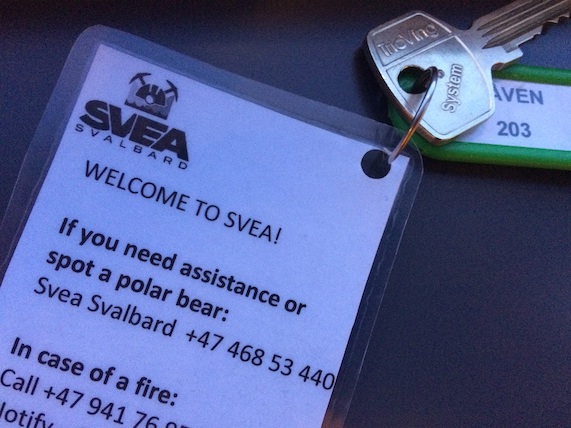
My room key at Svea had some useful advice
The next morning on our way back across the island to Longyearbyen, we had a rare treat – sunshine! We had to drive all the way up high into the mountains to do so, but we finally crossed the ‘sun line’ and saw the sun emerge over the peaks, the first time our guides had seen the sun in months.
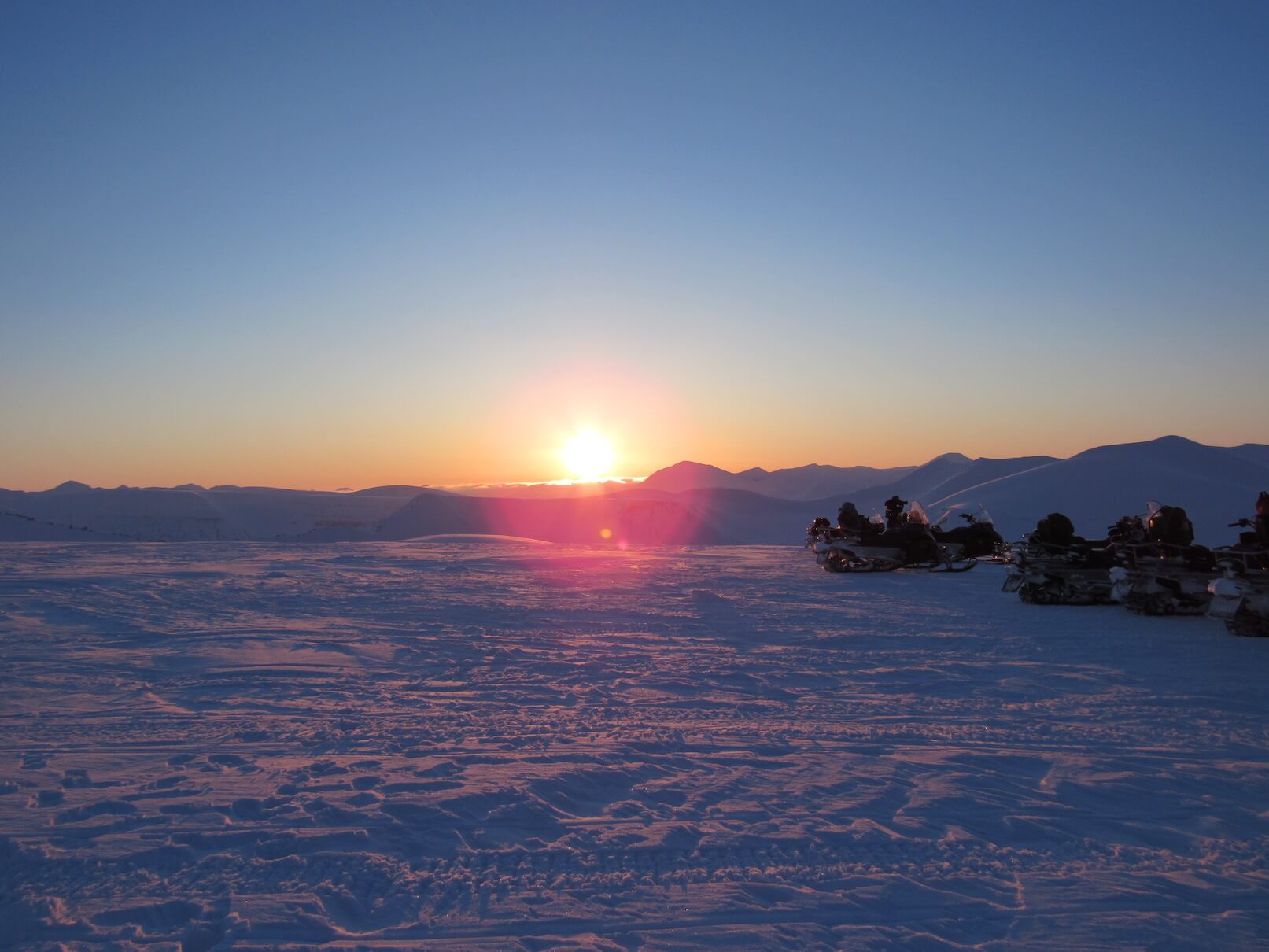
We found the sun! (Just)
Camp Barentz and Arctic Wilderness nights
For those who want to experience the unique Arctic wilderness, but with more comfort (or with less time available), Camp Barentz is just 10km outside Longyearbyen and hosts nightly Arctic Wilderness dinners.
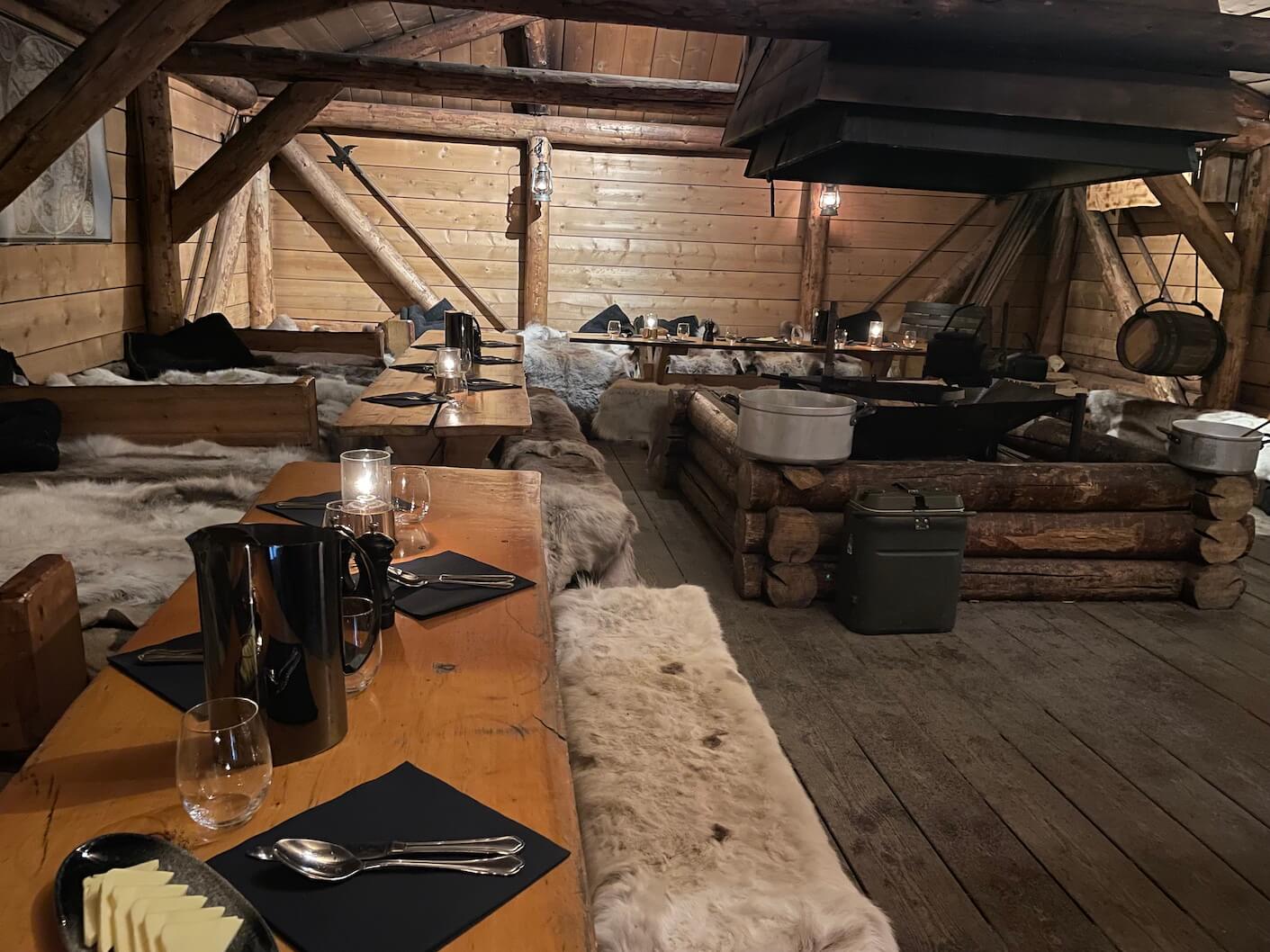
Camp Barentz has a replica of Dutch explorer Willem Barentz’s cabin where visitors can hear stories about his adventures and the discovery of Svalbard over dinner
During these, guests are served a traditional local stew in an authentic Norwegian explorers’ hut, while being entertained with tales of early explorers and pictures of the Northern Lights – lucky diners will be able to see the Northern Lights for themselves on a clear night as there is virtually no light pollution.
Inside a 5,000 year-old glacier
Having explored Svalbard from the outside, it was now time to delve inside and my final morning was spent deep in the heart of a 5,000 year-old glacier, following the glassy winding path cut out by the meltwater. We used the light of our head torches to follow the smooth ice walls deep into the glacier.
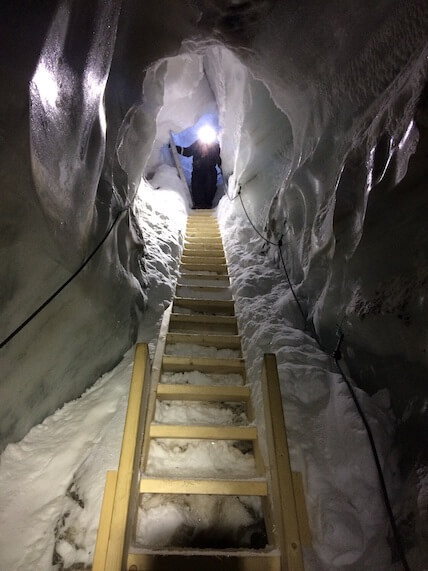
Descending into a 5,000 year-old glacier
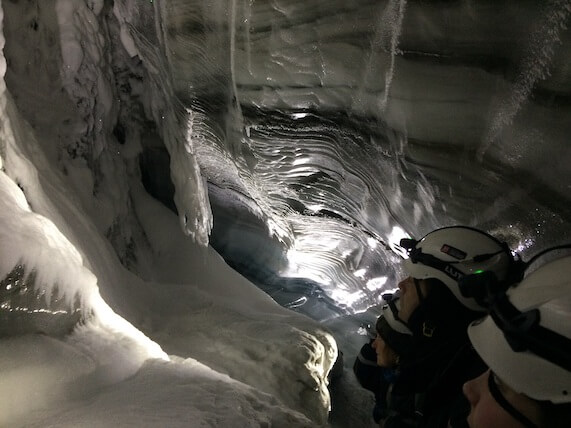
Inside the glacier itself. When I held back from the others and turned off my headlight, I was plunged into darkness, an incredible experience
Deliberately hanging back, I managed to lose everyone and switched off my head torch. The total darkness and silence that enveloped me was something out of another world and hard to find anywhere else – very much like Svalbard itself.
Svalbard holiday info
I travelled to Svalbard in February with Hurtigruten Svalbard. Activities on offer during the winter months include dog-sledding on snow, snowmobile safaris and e-bike tours while in summer excursions include boat trips, kayaking, ATV safari and dog-sledding on wheels.
Hurtigruten also runs the Norwegian Coastal Express and expedition cruises to Antarctica, America, West Africa, the Galápagos Islands, plus round Europe, the UK, Greenland and Jan Mayan island.
Svalbard isn’t just about ice and snow – read all about my trip to Svalbard in the summer, land of the Midnight Sun, where the sun never sets!
Hurtigruten Cruises sailings and destinations
Hurtigruten Expeditions cruises and destinations
Sailing the Norwegian coast with Hurtigruten’s Coastal Express
Visting Svalbard in summer – 24 hour sunshine, quad bikes and RIB cruises
Visiting Svalbard in winter – my epic trip with Northern Lights, dog sledding and exploring glaciers
